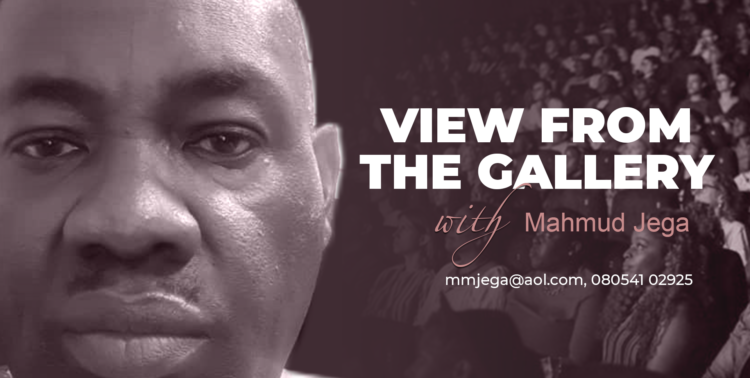Nigerians have always received official statistics figures with smiling skepticism. Almost no one believes it when government says inflation rate is 33%, when we know that the price of rice, yam, beans, potatoes, milk, sugar and meat in the market have increased two or three-fold within a short period of time. Last week however was the first time in living memory that Nigerians expressed skepticism with official figures in the other direction, i.e. that they appear to be exaggerated.
The publication by the National Bureau of Statistics on Tuesday last week of its Crime Experience and Security Perception Survey caused a stir in government circles and also in circles outside government. Four elements of the report caused this stir. One, that there were 51.98 million criminal incidents in Nigeria within one year, i.e. May 2023 to April 2024. Two, that 614,937 Nigerians were killed and 2,235,954 were kidnapped within the same period, 90% of it for ransom. Three, that families and friends paid N2.23 trillion to kidnappers as ransom in order to free loved ones within the same period. And four, that 1,587,363 motor vehicles were stolen all over the country within that period, majority of them in rural areas. [Why, since there are a lot more vehicles and more expert thieves in urban than in rural areas?] No wonder that the NBS report earned screaming headlines across all media channels and caused much excitement in the social media the next day and beyond.
The very next day, some media houses claimed that Department of State Services [DSS] agents stormed NBS’ immaculate head office in Abuja’s Central Area, shut down its website, carted away its computers and hauled in the Statistician General of the Federation for questioning over the report. While some newspapers quoted NBS staffers as saying anonymously that their boss was questioned and released, the agency’s spokesman denied that the boss was arrested or that their website was shut down, while Presidency, police and DSS all kept mum.
You know what this episode reminded me of? Darell Huff’s 1954 book called How To Lie With Statistics. Lecturers forced me to read it when I took two courses in Biostatistics. It showed various ways in which statisticians could mislead the reader without actually lying, and how a reader of statistical figures can mislead himself or herself by making certain assumptions. One of the most common cases of misreading is to assume that correlation is equal to causation. For example, if crime figures jumped within a certain Police Inspector General’s tenure, some people will assume that his ineptitude caused it. I am only giving a rough example!
Mr. Huff’s old book illustrated one case of misleading statistics with a sales promo graph by an animal feeds firm. It presented a vertical and horizontal graph of a cow before and after it fed on the company’s feed. On the horizontal plane, the cow was much increased in size; on the graph’s vertical plane, it showed only a slight increase in height. It turned out that the increase on the vertical side of the graph was the actual result, not the exaggerated increase on the horizontal plane, which an unsuspecting reader will assume!
I am not saying that NBS lied, marred or even erred with its statistics. Far from it. Who am I to say so? I am only an amateur Biostatistician. The last time I did any statistics was during my NYSC days, when I took a secondary school Biology class in Anambra State on an Ecology field trip to estimate the number of flowers, grasshoppers and butterflies in the school compound. We used one of the most elementary tools in statistics, sampling for stationary things such as flowers and catch and recapture method for mobile things such as grasshoppers and butterflies. NBS, on the other hand, is brimming with professional statisticians, lots of computers and highly modernized computer models of statistical analysis. I learnt from a staffer that its researchers undertook cumbersome visits to all nooks and crannies of the country in order to collect information on everything from employment, incomes, poverty, food, accidents, crime etc.
Ideally, that should not even have been necessary because every state government and every local government in Nigeria, as well as the police, hospitals and school boards should have their own, very good Statistics offices. They should to this work and NBS can verify, then rely on them to compile a national report. Many of them do have figures, but most are of doubtful authenticity. I sympathise with government agencies’ compilation of figures when I remember a horrific highway accident many years ago, when our newspaper reporters tried to ascertain casualty figures. “Eyewitnesses” at the scene gave one figure; police gave a much lower figure; Federal Road Safety Commission gave yet a different figure; the hospitals where the victims were taken to gave another figure, while victims’ families later phoned our Newsroom and gave an out-of-this-world figure.
The police, for example, may have figures only of crimes reported to their stations, which could be a fraction of the total number of cases. A case in point are rape incidents; since these have a huge social stigma attached to them, probably the majority of cases go unreported, but a good statistician will calculate the percentage of unreported cases and then extrapolate.
Extrapolation is another source of problem in compiling statistics. One newspaper reported that the NBS crime survey cost N2.7 billion. I don’t know if that is true. But even that huge sum may not enable it to cover everyone of Nigeria’s 37 states [including FCT] and 780 local governments, including FCT Area Councils. A statistician most often takes a sample and then extrapolates. A careful statistician must however ensure that the sample fairly reflects diversity, in this case of zones, states, as well as urban-rural divide. Otherwise, if you take a sample from Eti Osa and Kano Municipal and multiply it by the number of LGAs in Nigeria, “skewed” will not be enough to describe your results.
Which was why, in Biostatistics, we were careful to use Completely Randomised Design, in situations where samples are evenly distributed, and Randomised Block Design, where specimens are unevenly distributed. For example, in the whole huge secondary school compound where I led the students, there could be only one anthill. You could throw a square mesh in 50 areas and still fail to catch it. If on that basis you report that there are no anthills in the school compound, you have goofed!
When we were training on the Scientific Method, a golden rule was that research begins from observation, and research cannot debunk observation. It can only explain it. No amount of research by any professors today can prove that the current generation of teenagers are not severely hooked to the social media. Similarly, no computer method used by NBS can ever prove that the cost of rice and meat has not risen in the market. At best, if it wants to please the government, it could express the increase as a small percentage [33%, for example] when the price of a kilo of meat actually increased four-fold.
There is a reason why, for decades, we did not easily believe official statistics. In 2008, during a dinner in Washington, DC, a top Nigerian government official said, “Just before we left home, it was proved that a project could be 90% completed without being visible.” He was referring to a claim made then by the Federal Ministry of Power, that a Niger Delta Independent Power Project which was to generate 500 megawatts of power, was 90% completed even though it had not generated a single megawatt. So, what was the “90% completion”? Securing a site and paying compensation to host community, 10%; opening bids and awarding the contract, 20%; opening letters of credit, 30%; payment made to supplier, 40%; equipment shipped to ports, 50%; equipment cleared from the ports, 60% completion, etc. At the risk of spoiling the dinner, I raised my hand and said, “Sir, to me as a citizen, 90% completion means 450 megawatts of power generated out of 500.”
Let us leave the statistical methods for a while and take a look at the results. Fifty-two million crime incidents in Nigeria within one short year. There are 200 million of us here; assuming those incidents are fairly distributed, one out of every four Nigerians, including children and small babies, would have met with a violent crime incident within that period. I know some Nigerians who were kidnapped, robbed or otherwise assaulted but they were nowhere near one quarter of all the people I know.
One and a half million vehicles stolen. Holy cow! I don’t know how many vehicles there are in Nigeria right now, but one vehicle must have been stolen over and over again to account for this figure. Car theft appears to be less of a problem in Nigeria these days than in previous decades. Maybe it is overshadowed by more serious crimes such as kidnapping, but it could also be because more vehicles today have security features. More rampant these days is vandalization of vehicles; small thieves are sent to remove small but expensive parts of vehicles, which the vehicle owner could buy again at Panteka market.
N2.23 trillion in ransom paid, with an average of N2.7million paid per kidnap incident! Must be extrapolation; did all the families that paid ransom come forward and fill forms at police stations to reveal what they paid? As the NBS figures showed, most kidnapping took place in rural areas. Ransom paid in those areas is far less than what Billionaire Kidnapper Evans extracted from his victims’ families. Quite often, farms and houses have to be sold in the rural areas in order to raise the money to pay ransom. Few people in villages have the money or the desire to buy a kidnapped neighbour’s farm, and when the kidnappers got tired of waiting, they shot the victims. Higher ransoms are paid when rich folks are kidnapped on the highways, but not only are the highways now better policed by armed soldiers, rich folks also tend to travel by air or by train, or they stay put in the cities.
Finally, was it true that DSS interrogated the Statistician General over these figures? The right thing for government to do, I think, is to assemble an independent team of statisticians drawn from universities, research centres and private firms to sit with him and interrogate his methods and models. In case you want an amateur statistician/reporter to listen in, draft me in there. But the most important thing is how to drastically combat kidnapping and other violent crime, whatever the true figures are.









